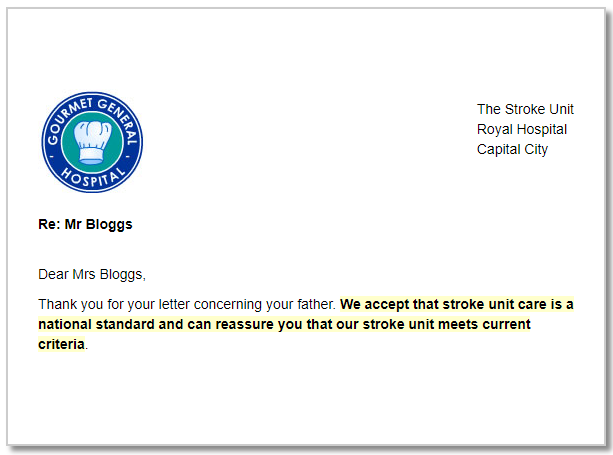
Category: Advancing Modules
Case 2: Stroke Unit
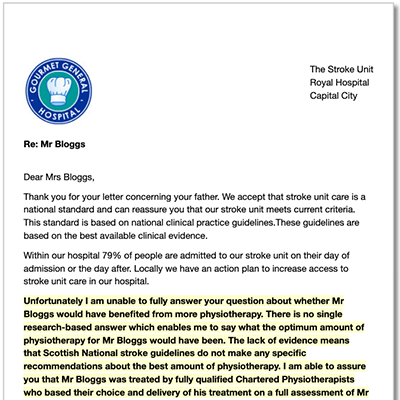
Complaint letter
You are the nurse manager who receives a complaint:
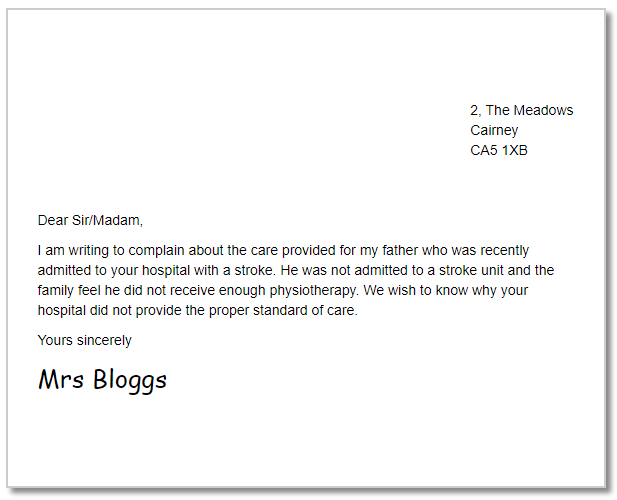
Reducing the risk of DVT- using Kendall SCD express system
Kendall SCD Express system
- Thigh-length
- Sequential
- Circumferential
- Slow inflation
- Frequency depends on venous refill
- With standard or comfort sleeves
(See the Research topic loop below for further information on RCTs.)
Topic Loop:
Key messages and resources
Key messages
- Research can provide evidence about whether treatments are effective
- It may even show that widely used treatments are not effective and should be abandoned
- You need to keep up-to-date, so you are aware of the results of important research studies and the most recent evidence based guidelines
- You can help find out which treatments are effective by facilitating the enrolment of your patients into relevant research studies
Resources
The end of Brenda’s story
As part of DVT prevention Brenda is treated with Intermittent Pneumatic Compression for the first 30 days. She does not develop any DVTs.
Over the next three months Brenda continues to work with the multidisciplinary team on the stroke unit. She recovers her speech and becomes mobile with a stick but does not regain any function in her left arm.
She is discharged home from hospital to live with her husband.
For more information about the CLOTS III trial and its outcomes for stroke practice see our STARS advancing module 17 – Reducing the risk of venous thromboembolism.
How long should Brenda receive treatment with IPC
How long should we apply IPC?
- As soon as possible after admission
- For up to 30 days
- Day and Night if possible
- Take off during bathing but remember to re-apply afterwards
- Can be taken off during therapy sessions but remember to re-apply afterwards
- Don’t worry about interruptions in IPC treatment and if patients only tolerate IPC during the day and remove overnight, that is better than no IPC
The CLOTS 3 trial only tested IPC for the first 30 days because this is the period when the risk of DVT is highest. It is generally recommended to remove IPC at 30 days. However, if the patient remains immobile beyond 30 days and then becomes unwell with infection or dehydration it would be logical to re-apply IPC until these additional risk factors have been effectively treated. This strategy has not been tested in a randomised trial.
Topic Loop:
Is Brenda eligible for IPC
IPC is suitable for:
- Patients who cannot walk to toilet unaided
- Patients in whom the aim of treatment is to improve survival
IPC is not suitable for:
- Patients receiving ‘end of life’ or palliative care
- Patients with bad oedema due to heart failure
- Patients suffering from skins problems on both legs (can use on one leg)
- Severe peripheral vascular disease
- Patients who are trying to mobilise against advice who are at risk of falling
Intermittent pneumatic compression (IPC)
What does IPC comprise?
- Intermittently squeezes the legs which increases the flow of blood in the deep veins
- The CLOTS-3 trial showed that it reduces the risk of DVT in stroke patients (link to evidence)
- Is effective in ischaemic & haemorrhagic stroke
- The trial also showed that patients receiving treatment with IPC were more likely to survive
- Should be used unless the patient is considered to have a poor prognosis and receiving palliative care
(for more information on IPC go to AM 17: Reducing the risk of venous thromboembolism)
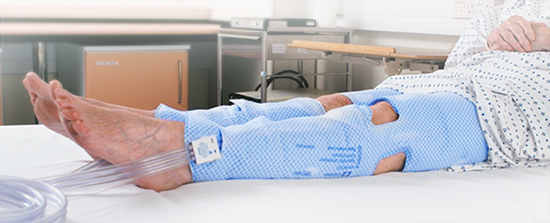
(See the Research topic loop below for further information on RCTs.)
Topic Loop:
What can I do to reduce Brenda’s risk of DVT?
So, in line with the guidelines, Brenda has not been prescribed heparin and has not had stockings applied. As a member of staff on the stroke unit there are a number of other aspects of care you could give Brenda to reduce her risk of DVT.
Q. Which of the following should you consider? Select true or false for each option listed below.
(See the Research topic loop below for further information.)
Topic Loop:
The results of the CLOTS trial changed National Guidelines
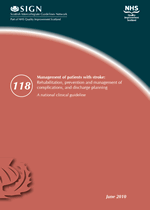
Based on the results from the CLOTS trial the SIGN 118 Guideline published in June 2010 said:
“Above-knee graduated elastic compression stockings to reduce the risk of deep vein thrombosis after acute stoke are not recommended”

NICE also withdrew their provisional recommendation that stroke patients should be treated with stockings in Feb 2010 and recommended:
“Do not offer anti-embolism stockings for VTE prophylaxis to patients who are admitted for stroke.”
This is an example of how research guides and informs national guidelines. (See Evidence based guidelines topic loop below for further information.)


